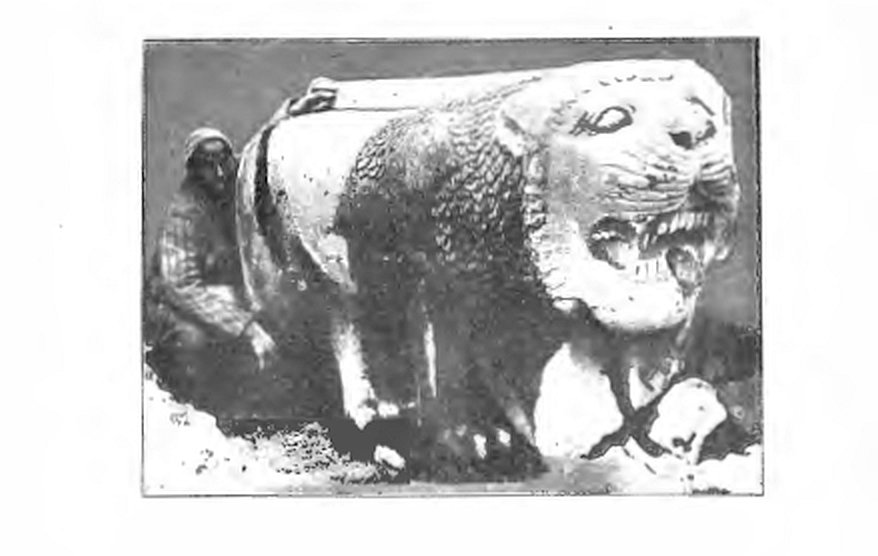was most likely the capital of the Assyrian province of Karnini and the Karnajim of the Bible
Besides Damascus and Haurini (the Hauran), Karnini was one of the three regions that King TiglatPileser conquered and incorporated in the 8th century BC.

To Carnea, the ancient name and the at least since the Iron Age settlement here adherent "Karnaijm", various traditions existed. These are usually the double name and the Ashtarot Karnaijm whoich is also mentioned in the Bible. Mostly due to the identification of the name with one of the two obvious Tullul Ashtara and Al-Ashari (description in the Onomastikon of Eusebius, etc.) and their name similarity, today's Sheikh Saad was often ignored.
However, Carneas / Karnaijm is said to have been Job’s hometown, and so in and around today's Sheik Saad, there are several references to Job / Ajjub and the eventful history of the place. The location of the episcopal city of Neapolis in Arabia towards Sheikh Saad, which can also be found in the TAVO, does not seem completely assured, although numerous ruins and ornaments of Christian origin seem to confirm this assessment. (so also ZDPV 14 p.142ff)
The Job tradition, however, is firmly rooted. Not only the pilgrim Egeria searched for it here.
Here you will find the "so-called" tomb of Job and the cachet Eijub a large stone monolith.
It was first noticed at the beginning of the 20th century that the image of Ramses II and an image of Baal Hadda, with corresponding consecrations on it, were written by stonemasons long time ago.
 Sheikh Saad / Darstellung aus ZDPV 14
Sheikh Saad / Darstellung aus ZDPV 14 Vergleich der verbliebenen Reste und einer nahezu identischen Abbildung nach A. Erman /ZDPV 15
Vergleich der verbliebenen Reste und einer nahezu identischen Abbildung nach A. Erman /ZDPV 15There is also the Hammam and Maqam Ajjub and in the nearby Der Ajjub we find the "Convent of Iob". This is according to old pictures a Hell./ Roman sanctuary, which, however, already had been in ruins at the end of the 19th century.
Very little is known and hardly mentioned in the literature are the remains of an Aramaic / Hittite palace, of which only the embrasure lion of the monumental gate were preserved. These monumental basalt lion figures, kept in Sendjirli (Sincirli) and Ain Dara style, certainly once adorned the portal of a palace and date back to around the 1st millennium BC. By comparing elaboration and style with other places they appear to be older than 3000 years.

Since general historiography assumes that the border between the Hittite and the Egyptian empires already clearly ran north of Damascus the 13th century BC, this palace could actually have been dated earlier. In any case, to my knowledge, it is the most southern location with this kind of artifacts and testifies to the extent of the great empire or its tradition and pictorial representation. After the disintegration of the Hittite Empire and after the regions fell piece by piece to Assyria, it is also plausible that, after the conquests of the 8th century BC, this important place became the center of the province and got the name of the place "Karnini".
Since no more reference has been made to the figures in any modern publication, unfortunately nothing is known about the current whereabouts of the figures or their archeological environment in Sheik Saad.
The immediate proximity of this important place to Tell Ashtara (less than 4km), which is usually associated with the depiction of the conquest of the city of Astarti, queries this "image" linkage in my view.
An Assyrian emperor would immortalize the most prominent and prestigious city on his palace frieze after winning a famous victory, even if it was not 4km away and then named after a whole province!
The Tell Ashtara, which today rises about 10-12 meters above the surrounding terrain, is certainly of utmost importance as a historical place (see also reports on the excavation campaigns 1966-69), but a consideration for a new link, seems reasonable and appropriate.
(See the whole topic also D.Kellermann - Ashtarot)
So it is to be considered, if the place located further south and despite eminent name deviation, nowadays Tell el Ashari or another significant Tell of the environment (Tell Zera'a) from the campaign of the TiglatPileser III, should be identified with the illustration and the designation - Al Astartu "City of Astarte". (see picture of the panel, today in the British Museum, above)

Extract from the DPV Map C3